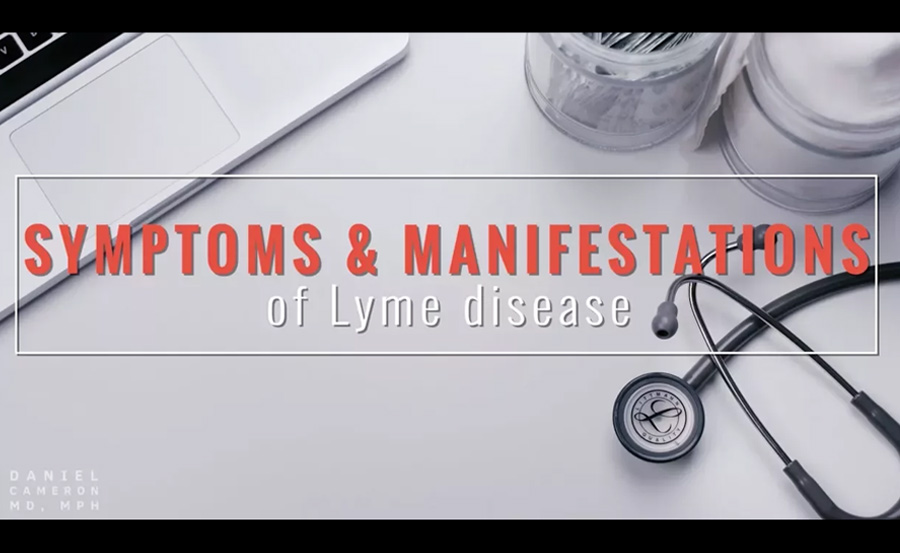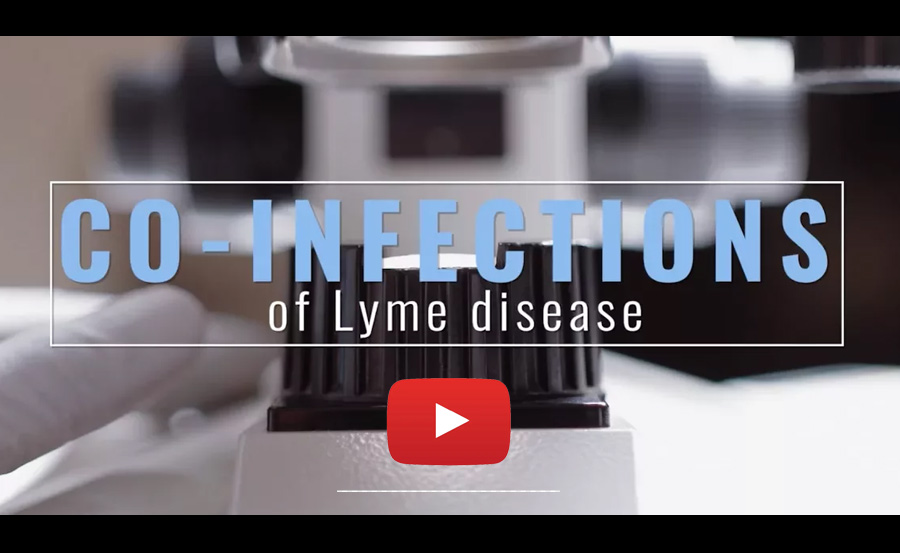Lyme Disease Videos
Lyme Disease
Symptoms & Manifestations of Lyme Disease

Symptoms of Lyme disease can vary from person to person in their intensity, diversity and longevity. Some patients present an erythema migrans or bulls-eye rash. The bacterium can also cause atypical rashes. A rash due to Lyme disease is often not itchy or painful and usually appears between 3 to 30 days after the tick bite. It can fade and reappear and is often confused with a spider bite. The rash can appear anywhere on the body not just at the site of the bite.
Some patients may present with Bell’s Palsy, Synovitis of the knee, Uveitis of the hips and shoulders and Sacroilitis. When initially infected by a tick, patients may experience flu-like symptoms; however, since the Lyme spirochete are very good at avoiding the immune system, it can remain dormant for days, months or even years. Neurological and cardiac symptoms such as meningitis, encephalitis and carditis can occur but, more often symptoms can include, severe unrelenting fatigue and joint pain, with or without swelling, sore muscles, neck and back pain, headaches, light, sound and temperature sensitivity, sleep disturbance, night sweats, irritability, anxiety, despair, sadness, lightheadedness, crying, poor memory and concentration, stiff neck, numbness and tingling sensations. The symptoms can worsen and fluctuate if the disease becomes chronic.


The full range of symptoms needed to recognize the disease may not be apparent to a physician during a routine examination. Some patients experience long-term consequences of Lyme disease. Types of chronic manifestations include Lyme encephalopathy, neurocognitive complications, post Lyme disease, neuropsychiatric Lyme disease, post Lyme disease syndrome, sensory neuropathy and carditis. Additional manifestations of Lyme disease include POTS and neurocognitive complications. POTS is an autonomic dysfunction that can appear years after antibiotic treatment for Lyme disease, resulting in fatigue, cognitive impairment and orthostatic intolerance such as palpitations, lightheadedness, chest discomfort, shortness of breath, among others.
"Diagnosing Lyme disease can be extremely complicated and treating it is also very difficult. Remember keeping yourself and your physician informed and engaged helps the process of battling Lyme disease.”
In a study from Tufts University School of Medicine, 24 of 27 Lyme disease patients presented with a mild encephalopathy which affects neurocognitive abilities. The mild encephalopathy began one month to 14 years after the onset of the disease and was characterized by: memory loss, mood changes and sleep disturbances. Other symptoms also included fatigue, headaches, depression, irritability and difficulty finding words. Another study found that 14% of 86 children who had Lyme disease exhibited neurocognitive complications such as: behavioral changes, forgetfulness, declining school performance, headache or fatigue and in 2 cases a partial complex seizures disorder.
Patients treated at the time of a bulls-eye rash may still feel sick and may exhibit manifestations of Lyme disease long after the initial tick bite. Diagnosing Lyme disease can be extremely complicated and treating it is also very difficult. Remember keeping yourself and your physician informed and engaged helps the process of battling Lyme disease.



